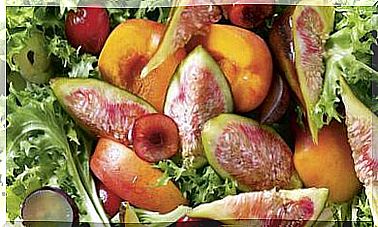Happy And Painless Menstruation Thanks To These Plants
On many occasions the period causes discomfort. If you can’t do without drugs, try these plants: they relieve and promote hormonal balance.

When the period is accompanied by pain or other discomfort, it is more difficult to live it naturally, without involving at least a small disorder. Nor is it strange that, to alleviate symptoms, analgesic and anti-inflammatory drugs are used every month, of which there are more and more health risks due to prolonged use.
Low back or belly pain, headaches, colic, diarrhea and weakness are the most common symptoms of painful menstruation, although in the most extreme cases there may even be vomiting and fainting.
4 medicinal plants to calm and regulate your menstruation
As an alternative to drugs, there is a good list of medicinal plants that, in addition to alleviating symptoms, will help you regulate the cycle and prevent these problems.
1. Artemis
Mugwort ( Artemisia vulgaris ), which contains essential oil and flavonoids, is one of the most effective.
It affects the hormonal level, behaving as estrogenic, astringent and slightly anti-inflammatory. Herbalists include it in formulas to reduce pain and normalize your period.
Take it as an infusion, better with other herbs, two warm cups a day, from nine days before the period. You will also find it in the form of a tincture, of which you can take 20 drops a day, with water or apple juice.
2. Female opener
Another great regulator is female abrótano ( Santolina chamaecyparissus ) or Manzanilla de Maó, which adds an antispasmodic and anti-inflammatory power to its estrogenic effect.
Use the flowery tops of the female abrótano in decoction or infusion. Drink two cups a day, from the nine days before your period.
Works well with sage and mint.
3. Sage
Sage ( Salvia officinalis ) is estrogenic, antispasmodic, and sedative. It can help you with various symptoms, such as low back pain, weakness, dizziness, headache, or vomiting.
Use the leaves and flowering tops to prepare a simple or mixed infusion, three cups a day; in liquid extract, 30 drops daily in three doses; and in capsules.
You should only avoid it in breastfeeding.
4. White willow
To soothe pain, without damaging the stomach, few are better than white willow ( Salix alba ). It contains salicylic acid and promotes a remarkable analgesic, antipyretic and anti-inflammatory effect.
Use the bark in decoction, better with other herbs with a more pleasant flavor, three glasses a day; in tincture or liquid extract, 30 drops in three doses.
With the advice of Josep Maria Teixé, herbalist at El Manantial de Salud









